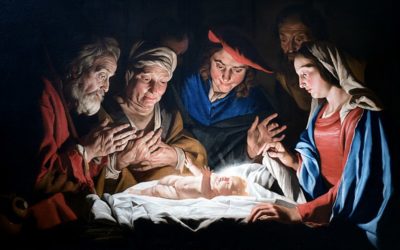Week 1 of Come Follow Me does not start at the beginning of Church history. Instead, it begins with Doctrine and Covenants 1, which is the first section of that book of scripture but not the earliest section received.
Here is what happened. After the Church was organized in 1830, Joseph Smith received a series of revelations that made Ohio the Church’s headquarters for a time but Missouri the ultimate gathering place.[1] In November 1831, when section 1 was received, total Church membership was small, with fewer total members than there are in just a single Utah stake today. The Church’s leaders were also very young. For example, Joseph Smith and Oliver Cowdery—the first and second elders of the Church—were just twenty-five years old.
At the time, the Church was called the Church of Christ[2] and would not receive its final revelatory name for several more years.[3] There was no First Presidency and no Quorum of the Twelve or Seventies. There were no wards, but there were branches, which at the time were called “churches.”[4] The Church was so small that individuals sometimes approached the Prophet for “commandments”—personal revelations much like patriarchal blessings today. Other revelations came to the Prophet for the Church as a whole or for groups.
Joseph Smith visited Missouri before section 1 was received and had another revelation in which William Phelps, an old newspaperman, was called “as a printer unto the church” and commanded to set up his printing operations in Missouri. One of the main purposes of that press was to print revelations.[5]
Joseph Smith had established a pattern of dictating revelations to scribes on loose sheets, which were then copied into a bound volume to make a permanent record. After copying, the loose sheets were often given to individuals or circulated so people could make additional copies for personal use before they were published. By the time of the November 1, 1831, conference in Hiram, Ohio, south of Kirtland, quite a few revelations had been compiled in a manuscript revelation book called “A Book of Commandments & Revelations.”[6]
At the November 1 conference, the elders asked “how many copies of the Book of commandments it was the will of the Lord should be published in the first edition of that work.” They voted to print ten thousand, though that number would be pared back later, and because of a mob attack, only twenty-nine incomplete copies would survive to the present day. The mob attack necessitated reprinting the revelations in 1835, this time under the title Doctrine and Covenants. But the first printed volume of revelations was called A Book of Commandments.[7]
A few months ago, the Church released a video of my colleague Brandon Metcalf showing one of the rare copies of A Book of Commandments to President Russell M. Nelson.[8] You can see two of these twenty-nine rare copies for yourself on the Joseph Smith Papers website, one belonging to Wilford Woodruff, the other to Oliver Cowdery.[9]
The minutes of the November 1 conference record, “Preface received by inspiration.”[10] This inspired preface to A Book of Commandments is now section 1 of the Doctrine and Covenants and the focus of this week’s Come Follow Me study.
Think of it as the Lord’s personal introduction to this volume of revelations. It is, as the section itself explains, “my preface unto the book of my commandments, which I have given them to publish unto you, O inhabitants of the earth.”[11]
Just as the early editions of the Book of Mormon had testimonies of the Three Witnesses and the Eight Witnesses printed at the back (which were moved to the front in later editions), the Book of Commandments also had “The Testimony of the witnesses to the Book of the Lords commandments,” written perhaps November 2, 1831. A copy can be seen on the Joseph Smith Papers website.[12]
But even more important was the testimony of the Lord included in section 1. “These commandments are of me, and were given unto my servants in their weakness, after the manner of their language, that they might come to understanding,” this testimony begins. In other words, the revelations were given in the dialect of the recipients for their benefit—not the elegant language that might have been used for other audiences.
We hope that reading Doctrine and Covenants 1 with this background will give you a good sense of its purpose and meaning, and that the words of the revelation will resound in your hearts and minds as it was intended to do.
[1] D&C 37: 1, 3; 38:32; 39:14-15; 51:16-17; 57:1.
[2] See, e.g., D&C 20:1, 38, 61, 68, 70-71, 80, 81; 21:11; 42:78
[3] D&C 115:4.
[4] See, e.g., D&C 20:81; 51:18.
[5] D&C 57:11; https://www.josephsmithpapers.org/person/william-wines-phelps; https://www.josephsmithpapers.org/intro/introduction-to-revelations-and-translations-volume-2.
[6] https://www.josephsmithpapers.org/paper-summary/revelation-book-1/3; https://www.josephsmithpapers.org/intro/introduction-to-revelations-and-translations-volume-1;
[7] https://www.josephsmithpapers.org/paper-summary/minutes-1-2-november-1831/1; https://www.josephsmithpapers.org/intro/introduction-to-revelations-and-translations-volume-2.
[8] https://www.churchofjesuschrist.org/media/video/2020-05-0160-president-nelson-views-rare-copy-of-the-book-of-commandments?lang=eng&collectionId=bb99b5e9f37d09bba5d32046e551f7196a301950.
[9] https://www.josephsmithpapers.org/paper-summary/book-of-commandments-1833/1; https://www.josephsmithpapers.org/paper-summary/oliver-cowderys-copy-of-the-book-of-commandments/1.
[10] https://www.josephsmithpapers.org/paper-summary/minutes-1-2-november-1831/1.
[11] D&C 1:6.
[12] https://www.josephsmithpapers.org/paper-summary/testimony-circa-2-november-1831/1.



